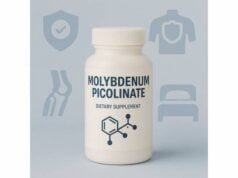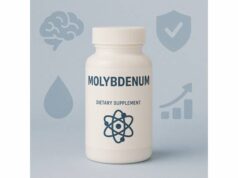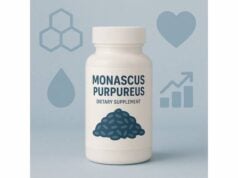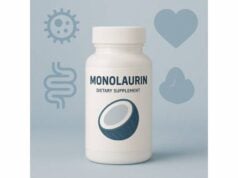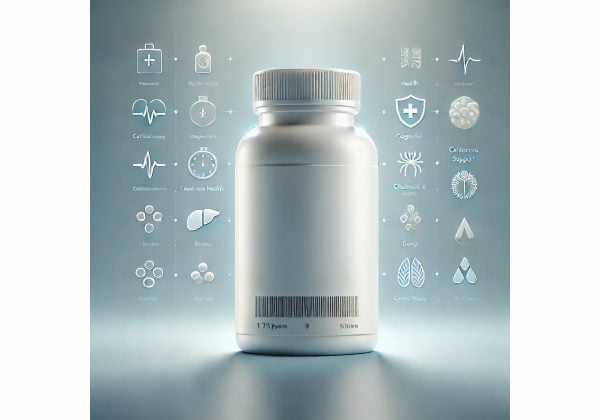
Mustard seed has been valued for millennia as a spice, preservative, and folk remedy. Today, interest is rising again because these tiny seeds concentrate glucosinolates that convert into pungent isothiocyanates (like allyl isothiocyanate) when crushed and moistened. Those compounds are responsible for mustard’s sharp aroma and many of its biological effects—from antimicrobial activity in foods to laboratory signals linked with inflammation control. In everyday cooking, mustard seed is versatile: it seasons pickles, rubs, and curries; it can be bloomed in oil to release nutty notes; or ground into classic pastes. Beyond the kitchen, some traditions apply mustard poultices for chest congestion or joint aches, though modern safety guidance urges care due to skin irritation risk. This guide explains what mustard seed can and cannot do, how to use it well, realistic dosage ranges for culinary and traditional contexts, safety considerations (including allergies and erucic acid in mustard oil), and what the current research actually shows.
Essential Insights
- May support food safety and digestive comfort through antimicrobial and carminative actions; possible anti-inflammatory signals seen mainly in preclinical studies.
- Can irritate skin and mucosa; topical pastes and oils may cause burns or dermatitis, especially on sensitive skin.
- Typical culinary intake: about 2–5 g ground or whole seeds per day in meals; start low and assess tolerance.
- Avoid high-dose use or topical applications in infants, during pregnancy, with active ulcers, or with a known mustard allergy.
Table of Contents
- What is mustard seed?
- Proven benefits and limits
- How to use mustard seed daily
- How much mustard seed per day?
- Side effects, interactions, who should avoid
- Research snapshot and FAQs
What is mustard seed?
Mustard seed is the dried fruit of several Brassicaceae plants used for spice and oil: most commonly white/yellow mustard (Sinapis alba, sometimes labeled Brassica hirta), brown/Oriental mustard (Brassica juncea), and black mustard (Brassica nigra). The seeds differ in flavor and phytochemistry. White mustard is milder and dominated by the glucosinolate sinalbin; brown and black mustard tend to be hotter due to sinigrin. When seeds are broken and combined with water, the enzyme myrosinase hydrolyzes glucosinolates to a mix of biologically active products—chiefly isothiocyanates (like allyl isothiocyanate from sinigrin) along with nitriles and other minor compounds. Heat and acidity modulate this chemistry: hot water or vinegar can inactivate myrosinase and steer flavor from sharp to mellow, while salt and temperature determine how long the “heat” persists in prepared mustards.
Culinarily, mustard seed contributes more than heat. Whole seeds lend crunch to pickles and relishes; tempering (briefly sizzling in oil) coaxes out nutty aromas for Indian, Middle Eastern, and African dishes. Ground seed thickens and stabilizes sauces and emulsion dressings. Mustard’s volatile isothiocyanates are also useful for food preservation because they inhibit many spoilage microbes and some pathogens in model systems, which is one reason mustard appears in brines and cured meats.
Nutritionally, seeds provide oil (often 25–40 percent), protein (up to roughly one-third by weight in some varieties), and characteristic phenolics. The oil fraction varies by species and cultivar: edible mustards grown for oil (especially B. juncea, B. rapa, and B. napus rapeseed) may contain meaningful amounts of erucic acid unless bred as low-erucic strains. Culinary mustards in North America and Europe rely mostly on white and brown seeds balanced for flavor rather than oil yield, and the condiment pastes typically contain vinegar, salt, and turmeric for color.
Traditional uses span many cuisines and systems of medicine. In the kitchen, mustard acts as a digestive spice—often paired with cumin, fennel, and ginger to open a meal. In folk practice, external mustard plasters have been used for chest congestion or sore muscles because isothiocyanates feel warming and increase local blood flow. These external uses, however, require caution: prolonged contact or high concentrations can cause marked irritation or even blistering.
In short, mustard seed is both a flavor tool and a concentrated source of reactive plant compounds. Understanding how processing affects those compounds—crushing, heating, fermenting, or pairing with acidic ingredients—helps you use mustard confidently for taste, digestive support, and food safety, while avoiding the pitfalls of excessive exposure or skin contact.
Proven benefits and limits
A realistic picture of mustard seed’s benefits comes from three places: culinary tradition, food science, and preclinical research. These lines of evidence overlap at times, but they are not interchangeable. Here is what they suggest—and where the boundaries lie.
Digestive comfort and appetite. In small culinary amounts, mustard seed behaves like other warming spices: it stimulates salivation, adds aromatic complexity, and helps many people digest heavier or bean-rich meals with less gas. This is practical, everyday value. Mechanistically, pungent isothiocyanates activate sensory receptors in the mouth and gut, which can increase gastric juice and bile flow. While these effects are plausible and consistent with spice physiology, they are not clinical endpoints; think “comfort,” not “cure.”
Food preservation and safety. Allyl isothiocyanate (AITC), the main volatile released from sinigrin-rich mustard, suppresses a broad range of microbes in lab settings and food models—one reason mustard appears in pickling brines and condiment systems that resist spoilage. In practice, mustard is not a stand-alone preservative for unsafe foods; it is a helpful layer in a broader recipe that includes heat, salt, acidity, and refrigeration. In your kitchen, mustard can extend the freshness of slaws, dressings, and marinades while adding snap.
Inflammation pathways. Many studies in cells and animals show that isothiocyanates can modulate signaling pathways tied to inflammation and oxidative stress (for example, activating the Nrf2 antioxidant response and inhibiting pro-inflammatory cascades). That sounds promising, but translating these signals to clinical outcomes requires human trials with well-defined exposures. For mustard seed specifically—not extracts of other crucifers—human evidence is limited. It is reasonable to frame mustard as a flavorful way to incorporate glucosinolate-rich foods rather than as a stand-alone anti-inflammatory supplement.
Metabolic health signals. Extracts of Brassica seeds and their constituents have shown antidiabetic and lipid-modulating signals in preclinical work, and some seed meals improve markers in animal models when used as feed. Again, this points to potential but falls short of clinical proof for mustard seed as a therapy. As a spice replacing sugar-heavy or sodium-heavy sauces, mustard can indirectly support dietary patterns linked with healthier weight and cardiometabolic profiles.
Skin and respiratory uses (external). Traditional mustard plasters create warmth but often at the cost of skin irritation. Case reports and safety monographs caution that misuse can lead to chemical burns. There are no robust controlled clinical trials showing that topical mustard outperforms safer, well-tested options for coughs or aches. If you prefer warming rubs, use modern products designed for skin with known dosing and safety margins; avoid DIY mustard poultices, especially for children or older adults.
Allergy awareness. Mustard is a priority food allergen in many regions. For sensitive individuals, ingestion or even skin contact can trigger reactions ranging from oral itching to anaphylaxis. From a public-health perspective, the clearest “benefit” of discussing mustard is preventing accidental exposure by reading labels and understanding that mustard hides in spice blends, sauces, and processed meats.
Bottom line: mustard seed offers culinary and food-safety advantages with plausible health-related signals, but human clinical evidence for disease treatment or prevention is limited. Enjoy it as part of varied meals rich in vegetables, pulses, whole grains, herbs, and spices—where its benefits are most reliable and its risks are minimal.
How to use mustard seed daily
Mustard is at its best when used thoughtfully at three stages of cooking—tempering, grinding, and finishing—each unlocking different flavors and functions. These methods also influence the formation of isothiocyanates, which drive pungency and some antimicrobial effects.
Tempering whole seeds (Indian-style “tadka”).
- Warm a neutral or mildly nutty oil (such as peanut or mild olive) over medium heat.
- Add ½–1 teaspoon whole brown or black mustard seeds for a dish serving 2–4.
- When the seeds pop and crackle (10–20 seconds), immediately add aromatics (curry leaves, garlic, chilies) and then your vegetables or legumes.
Tempering tames sharpness and brings out a toasty, nutty profile. It pairs well with lentil stews, sautéed greens, cabbage stir-fries, and potato dishes.
Blooming spices for pickles and chutneys.
- Toast a dry pan with mustard seed, cumin, and coriander for 30–60 seconds, then grind coarsely.
- Stir into a brine or fruit chutney near the end of cooking so mustard’s volatile notes remain.
This boosts aroma and adds a mild preservative effect within a properly acidic recipe.
Grinding for pastes and dressings.
- For a classic mustard paste, grind yellow seeds and whisk with cool water to activate myrosinase, then add vinegar and salt to set the flavor.
- For a quick vinaigrette, whisk ¼–½ teaspoon ground mustard with 1–2 teaspoons vinegar or lemon juice, then emulsify with 1–2 tablespoons oil; add honey or herbs to taste.
Cool water first maximizes pungency; acids stabilize and mellow it.
Baking and rubs.
- Mix 1–2 teaspoons mustard powder into spice rubs for poultry or tofu.
- Add a teaspoon to bread doughs or savory crackers for depth and better keeping quality.
Heat reduces enzyme activity and softens sharpness, leaving a warm, rounded spice.
Pairing tips.
- With vegetables: cabbage, cauliflower, Brussels sprouts, and greens love mustard’s lift.
- With proteins: eggs, fish, legumes, and smoked meats all benefit from mustard’s emulsifying and deglazing power.
- With ferments: mustard compliments sauerkraut, kimchi-style slaws, and yogurt sauces.
Storage and freshness.
- Whole seeds keep their potency for a year or more in an airtight jar away from heat and light.
- Ground mustard is best within 3–6 months; grind small batches as needed.
- Prepared mustard (condiment) stays lively for weeks in the fridge; warmth and air dull the bite.
Topical traditions—safety note.
If you come across recipes for mustard plasters or baths, proceed with caution. If attempted at all by healthy adults, dilute heavily (for example, a tablespoon of mustard powder in a full tub of warm water), limit exposure to a few minutes, and stop if redness or burning develops. Never apply under occlusion, never use on children or broken skin, and avoid mucous membranes and the face. Safer warming options (heating pads, capsaicin creams made for skin) are preferable.
By approaching mustard as a culinary craft rather than a cure-all, you gain flavor, texture, and a small layer of food protection—benefits that add up across many meals.
How much mustard seed per day?
Because mustard seed is a food, not a standardized supplement, “dosage” revolves around practical culinary amounts and tolerance. A sensible approach balances flavor goals with safety considerations involving pungent volatiles, allergens, and—if you use mustard oil—erucic acid exposure.
Culinary seed and powder.
- Beginner range: 1–2 grams per day (about ½–1 teaspoon of ground yellow mustard or ¾–1 teaspoon of whole seeds), spread across meals.
- Typical culinary range: 2–5 grams per day (roughly 1–2 teaspoons ground or 1–1½ teaspoons whole), depending on spice tolerance and recipe style.
- Upper culinary range for enthusiasts: up to about 6–8 grams on days with pickle making or spicy curries; most people will find this quite pungent.
Start low; mustard’s heat can surprise you, especially with brown/black seeds or freshly ground powder made with cool water (which maximizes isothiocyanate release).
Prepared mustard (condiment).
- A common serving is 1–2 teaspoons, which typically contains less active pungent compounds than freshly ground seed because acidity and processing moderate enzyme activity. Many people enjoy 1–3 servings across a day during barbecue season or with sandwiches and dressings.
Mustard oil and erucic acid.
- In regions where edible mustard oil is customary, home cooks often use 5–10 mL per serving when tempering or finishing dishes. If you use mustard oil regularly, choose products labeled low in erucic acid or blended for culinary use, and rotate with other oils. This is both a flavor strategy and a conservative way to limit exposure to very-long-chain monounsaturated fatty acids.
- If local regulations classify pure mustard oil as “for external use,” do not use it for cooking; select culinary oils instead (e.g., canola/rapeseed labeled low-erucic, olive, peanut).
Timing and preparation nuances.
- Use cool water first if you want more “hot” mustard (activates myrosinase before acid is added).
- Use hot liquids or early cooking to soften sharpness (heat inactivates the enzyme and preserves milder aromatics).
- Whole seeds deliver crunch and a subtler flavor; ground seeds deliver faster, bigger heat.
Special situations.
- Sensitive digestion or reflux: favor yellow mustard, temper in oil, and keep to the low end of the range.
- Thyroid considerations: very high, chronic intakes of raw crucifer seeds are theoretically goitrogenic, particularly with iodine deficiency. Typical culinary amounts in an iodine-sufficient diet are generally considered compatible; still, rotate crucifers and ensure adequate iodine.
- Athletes and heavy sweaters: salty prepared mustard can be a practical condiment to improve palatability of higher-protein meals; there is no established “performance dose.”
There is no authoritative daily allowance for mustard seed. Let flavor, tolerance, and overall diet quality lead the way. If you’re considering high, regular intakes beyond culinary use—or concentrated extracts—treat that as a supplement practice and discuss it with a healthcare professional who can account for your medications, thyroid status, and allergy history.
Side effects, interactions, who should avoid
Irritation and GI upset. Mustard’s isothiocyanates can irritate mucous membranes. In the mouth and esophagus, that manifests as sharp heat. In the stomach, larger amounts—especially on an empty stomach—may cause burning, nausea, or reflux in sensitive people. Prepared mustard is gentler than freshly mixed powder with cool water.
Skin reactions. Topical contact may lead to redness, dermatitis, or even blistering if concentrated pastes are left in place or occluded. Commercial muscle rubs are preferable to do-it-yourself mustard plasters. Wash hands after handling ground mustard and avoid touching your eyes.
Allergy. Mustard is a recognized priority food allergen in several jurisdictions. Reactions can be serious and include anaphylaxis. Allergic proteins include 2S albumins (napins) and other storage proteins (e.g., Sin a 1, Sin a 2 in yellow mustard; Bra j allergens in brown mustard). People with known legume or nut allergies are not automatically allergic to mustard; however, cross-reactivities can occur in complex ways. Anyone with a suspected mustard reaction should seek evaluation by an allergist; strict avoidance and emergency planning may be required.
Thyroid considerations. Glucosinolates and some breakdown products are goitrogenic in certain contexts. Very high intakes of raw cruciferous material—especially if iodine intake is low—can interfere with thyroid hormone synthesis. Normal culinary amounts of mustard seed within a mixed diet are unlikely to cause issues for most people, but individuals with thyroid disease should avoid extreme, daily doses of raw mustard preparations and ensure adequate iodine.
Mustard oil and erucic acid. Mustard and related seed oils can contain erucic acid. Regulatory bodies have set conservative exposure benchmarks; many edible oils are bred or refined to keep erucic acid low. If you cook with mustard oil frequently, favor low-erucic products, vary your oils, and keep portions reasonable. Infants and young children should not consume high-erucic oils.
Medication interactions.
- No consistent, clinically proven drug interactions are established for culinary mustard seed.
- Theoretical cautions include:
- Irritant synergy with other pungent agents (capsaicin, high-dose ginger) that may worsen reflux.
- Thyroid medications: in theory, extreme raw crucifer intake could require closer monitoring of thyroid replacement dosing.
- Topical counterirritants: avoid layering mustard plasters with other heating liniments; irritation and burns can result.
Who should avoid or use only under medical guidance.
- Infants and young children: avoid topical mustard and high-pungency foods.
- Pregnancy and breastfeeding: culinary amounts are fine for most, but avoid topical plasters or high-dose concentrates; reflux is common and may be aggravated.
- Active GI ulcers, esophagitis, or severe reflux: keep to small amounts or avoid when symptomatic.
- Known mustard allergy or prior anaphylaxis: strict avoidance; carry prescribed emergency medication if directed by your clinician.
- Dermatitis or sensitive skin: avoid topical use entirely.
Treat mustard like any concentrated spice: a little delivers a lot. If you experience burning, hives, wheezing, or swelling after exposure, seek immediate medical care.
Research snapshot and FAQs
What are the main active compounds in mustard seed?
Glucosinolates (notably sinigrin in brown/black mustard and sinalbin in yellow mustard) are the precursors. When you crush seeds and add water, myrosinase converts them primarily into isothiocyanates (like allyl isothiocyanate, the “mustard oil” responsible for pungency) along with other minor products. Phenolic acids (such as sinapic acid and its esters) and proteins (including allergenic napins) contribute additional properties. Processing, pH, salt, and temperature shift how much and which products are formed.
Does mustard seed have proven anti-inflammatory effects in humans?
Human clinical evidence specific to mustard seed is limited. Robust anti-inflammatory outcomes are mostly preclinical or extrapolated from broader crucifer research. That said, as part of a plant-forward diet, mustard can help people flavor meals with fewer sugary sauces and more vegetables—dietary choices that correlate with healthier inflammatory profiles.
Is allyl isothiocyanate safe?
In typical culinary exposures, yes for most people. The characteristic nose-tingling heat reflects sensory receptor activation, not damage. However, concentrated AITC vapors or pastes can irritate eyes, nose, lungs, and skin. In food products, levels are usually well within conservative intake guidance. Store ground mustard closed and avoid inhaling dust.
What about bisphenol F in mustard?
A specific manufacturing pathway can produce small amounts of bisphenol F during mustard processing. Risk assessments to date indicate that dietary exposure from mustard products is low and not expected to cause health effects at common intakes. If you prefer to minimize exposure, rotate mustards and favor reputable brands that monitor their processes.
Is mustard oil healthy?
It depends on the product. Culinary mustard oils popular in South Asia often provide a robust flavor and favorable omega-3 to omega-6 balance but can contain erucic acid unless bred or refined to lower levels. Choose oils labeled for edible use in your region, rotate with other culinary oils, and keep portions moderate. Where pure mustard oil is not approved for cooking, use approved alternatives.
Can mustard help with colds or muscle pain when applied to the chest or skin?
Evidence is anecdotal. The warming effect can feel soothing, but risk of irritation and burns is real. Safer, well-studied options (humidified air, honey for cough in adults, appropriate over-the-counter rubs) are preferable. Avoid mustard poultices on children and sensitive adults.
How does cooking change mustard’s effects?
Heat and acid reduce myrosinase activity, leading to milder flavor and fewer newly formed volatile isothiocyanates from seed. Tempering whole seeds in oil emphasizes nutty notes; mixing with cool water before adding vinegar maximizes heat; long cooking softens pungency. None of these culinary methods turn mustard into a medicine—but they do let you tailor flavor and tolerance.
What are smart ways to get mustard’s upsides without the downsides?
- Use whole or ground seeds in small amounts daily rather than infrequent large doses.
- Pair with acidic ingredients (vinegar, lemon) to stabilize flavor while moderating sharpness.
- Avoid DIY topical applications; enjoy mustard in meals instead.
- If allergic or highly sensitive, learn the many names mustard hides under in ingredient lists and choose alternative condiments.
Mustard seed rewards good technique. Treat it as a kitchen essential that adds flavor, mild antimicrobial support in recipes, and variety—while staying realistic about health claims.
References
- Biologically Active Compounds in Mustard Seeds: A Toxicological Perspective (2021)
- Brassica Genus Seeds: A Review on Phytochemical Screening and Pharmacological Properties (2022)
- Erucic Acid—Both Sides of the Story: A Concise Review on Its Beneficial and Toxic Properties (2023)
- Yellow Mustard Protein a Immunoreactivity Reduction Through Seed Germination, Lactic Acid Fermentation, and Cooking (2024)
Disclaimer
This article provides general information about mustard seed for culinary and educational purposes and is not a substitute for professional medical advice, diagnosis, or treatment. Always seek the advice of your physician or qualified healthcare provider with questions about your health, allergies, or medications, and before using concentrated preparations or topical applications. If you experience signs of an allergic reaction (such as hives, wheezing, swelling, or dizziness), seek emergency care immediately.
If you found this guide helpful, please consider sharing it with friends and colleagues on Facebook, X (formerly Twitter), or your favorite platform, and follow us for future evidence-based articles. Your support helps us continue creating high-quality resources.

